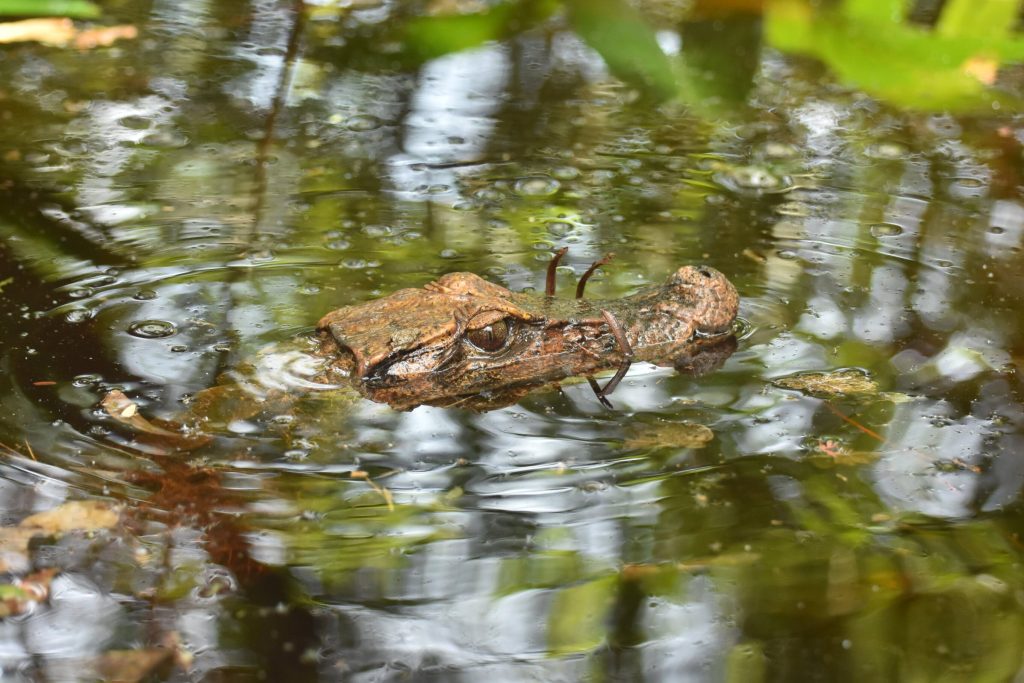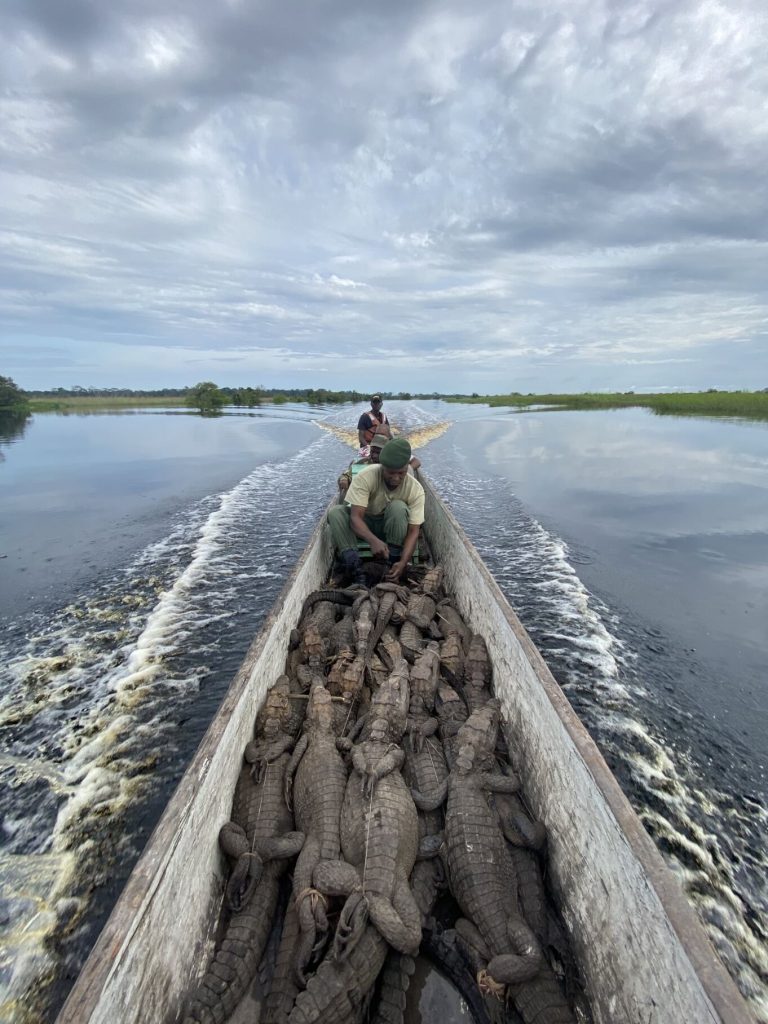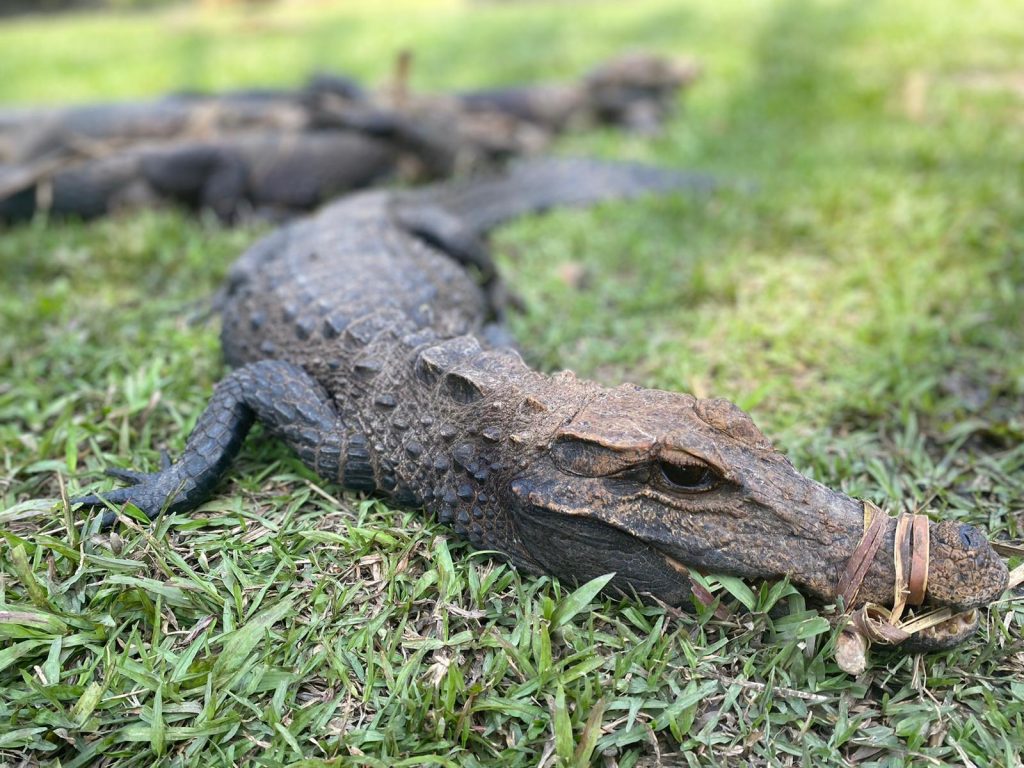Lessons learnt from the seizure of 30 Congolese dwarf crocodiles
In late October 2020, 30 Congolese dwarf crocodiles were released into their natural habitat, after having been seized from poachers. This incident highlighted the peculiar trafficking of a poorly known and vulnerable species that is endemic to the Congo Basin.

With their legs and mouths bound by lianas, and crammed into bags on the back of two motorbikes, the 30 dwarf crocodiles were travelling towards Impfondo, the capital of the Likouala district of northern Congo, when they are seized by the ecoguards of the Lac Télé Community Reserve. The reptiles, which can spend weeks out of the water without eating, are transported alive to the markets of Ouesso, Pokola or Brazzaville, where they are sold for their meat.
The dwarf crocodiles of the Congo are particularly easy to hunt because of their size. “You can almost pick them up,” explains Ben Evans, Director of the Lac Télé Community Reserve. “They can be hunted with a simple hook trap, by reproducing the cry of a juvenile, at night by dazzling them, or found directly in their burrows.”
In the Lac Télé Community Reserve, where nearly 20,000 people live, their hunting is traditional. “The dry season makes hunting difficult, the rainy season makes fishing difficult, but crocodiles can be trapped all year round,” explains Ben Evans. In this flood-prone region of northern Congo, where agriculture and livestock breeding are difficult, crocodiles are therefore an easy and essential source of food and protein for the communities.

But in the face of necessity, they have also become a source of income for some hunters who sell them to the highest bidder. “The main reason for this hunting is the lack of alternative sources of income,” explains Bola Madzoke, who is in charge of the reserve’s ecology department, “poaching is more common in the run up to the new school year, for example. It allows hunters to buy school supplies, bringing in a little bit of money to help solve their problems.”
For the traffickers, however, it’s a lucrative business: a crocodile bought at 5,000 CFA francs from a hunter in the reserve can be sold for up to 60,000 CFA francs in a market in a big town. With increasing demand, deregulated hunting practices can quickly threaten the overall population of the species. Between November 2018 and March 2019, 3,257 crocodiles were exported from the Reserve to the big cities, with an average of 10 tonnes of meat per month leaving the reserve. At this rate, how long can the Congo dwarf crocodile survive?
“in the long run, there will be a shortage”
Bola Madzoke
“Hunters are finding that, as the years go by, they need to expend more effort on their hunts as crocodiles are becoming increasingly rare. They understand that in the long run there will be a shortage,” reports Bola Madzoke. The threat to the crocodile is evident and the dynamics are understood, but due to a lack of detailed studies, putting precise figures on the scale of the problem is difficult.
“Freshwater ecosystems are among the most threatened on the planet, and yet they are the least represented in biodiversity research and conservation efforts,” says a 2019 study. Yet this study points out two concerning facts: 88% of freshwater megafauna disappeared between 1970 and 2012, and freshwater animal populations are disappearing twice as fast as terrestrial or marine animals.

“Congo’s dwarf crocodile is the most traded crocodile in the world that doesn’t fall under a management program” adds Matthew Shirley, Central African crocodile specialist with the International Union for Conservation of Nature (IUCN).
However, like WCS, Shirley argues that a sustainable hunting programme for Congo’s dwarf crocodile can save the species. The model of sustainable hunting programmes has been proved to work in regulating threats to freshwater megafauna. Systems that regulate the hunting of crocodiles, provide greater security for the species by controlling the number of individuals taken and ensuring long-term, sustainable sources of income for the communities.
Aware that the species is becoming rare and that they currently derive negligible benefits from it, hunters in the Reserve are willing to work with WCS to devise a sustainable model for the hunting of dwarf crocodiles that meets their needs. To support this model, WCS is in ongoing dialogue with communities, and has undertaken an inventory of the dwarf crocodile population in Congo.
And soon, thanks to a better understanding of this species and the threat it faces, sustainable hunting of the Congo’s dwarf crocodile could, in Matthew Shirley’s words, “enable everyone to benefit more from the crocodile trade, while taking fewer risks, including the crocodiles”.

